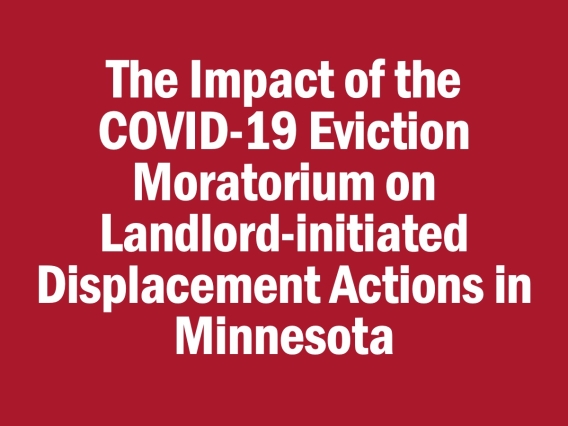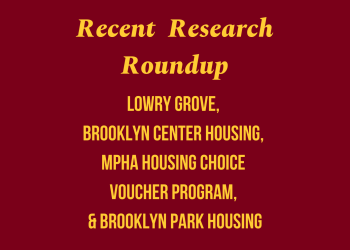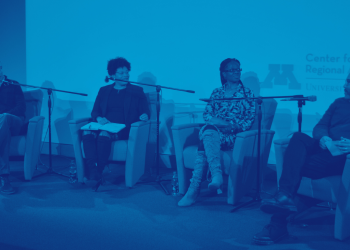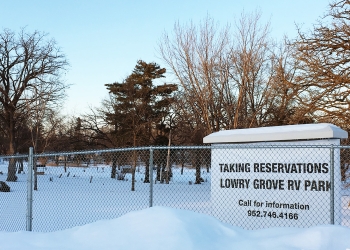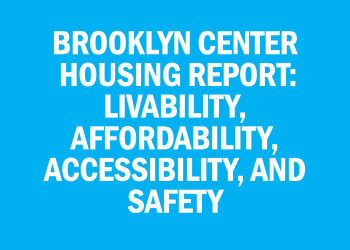Report submitted to the Minnesota ERASE Campaign (End Rental Arrears and Stop Evictions). ERASE is an effort to ensure that the historic aid enacted by Congress reaches the lowest-income and most marginalized renters it is intended to help. We are working to eliminate rental indebtedness caused by the pandemic, prevent evictions, and create support for long-term policy changes to end housing instability and homelessness. Co-convenors of the campaign include ACER (African Career Education Resource); Housing Justice Center, and MHP (Minnesota Housing Partnership).
Introduction
The COVID-19 pandemic created a critical housing situation for many lower-income households whose earnings were interrupted by the economic dislocations produced by the pandemic. Renters especially were faced with the prospect of being forced from their homes through eviction if and when they fell behind on rent. Moreover, the potential for families to be homeless was seen additionally as a public health issue during a pandemic when increased exposure could readily lead to increasing infection and death rates. In this environment, local, state, and federal authorities began to respond by issuing eviction moratoria of different types and providing emergency rental assistance to keep families in their homes.
In Minnesota, the Governor’s Executive Order 20-14 established an eviction moratorium on March 23, 2020. This Order remained in force until a phase out began in August of 2021.
The federal Centers for Disease Control (CDC) issued a temporary national moratorium on September 1, 2020. Originally set to expire on December 31, Congress extended it for one month to January of 2021 and then President Biden extended it through July of that year. The CDC moratorium was targeted to counties experiencing high levels of COVID-19 transmissions, and thus did not cover all areas. The CDC moved to issue a new moratorium in August of 2021, but this was challenged by the real estate industry and overturned by the Courts.
The Minnesota eviction moratorium was more comprehensive than the CDC eviction moratorium but was renewed on a monthly basis. Finally, in July of 2021, 16 months after it was first initiated, the moratorium was phased out. In July, evictions were allowed for lease violations but not for non-payment of rent. In August, landlords could terminate leases for non-payment from tenants who were ineligible for COVID-19 emergency rental assistance. In September, evictions were allowed for tenants ineligible for COVID-19 emergency rental assistance. This gradual reduction of tenant protections was referred to as the ‘eviction off-ramp’. The final eviction protections applied in cases of non-payment by eligible tenants with a pending COVID-19 emergency rental assistance application. Those protections lasted until June 1, 2022.
Eviction moratoria did much to alleviate the concerns of tenants and their advocates that families would be thrust out of their homes during the pandemic. At the same time, however, reports of landlords ignoring the eviction moratoria (see, e.g., Morgenson 2020; Strickler, 2022; U.S. House of Representatives, 2022) were an ongoing concern. Additionally, there was concern that landlords were resorting to other means to move renters out of units, that instead of pursuing formal eviction proceedings through the Courts, that landlords were pushing out renters through other extra-judicial means. Together, eviction and extra-judicial actions taken by landlords to move renters out of their homes constituted what we call “Landlord Initiated Displacement Actions” (LIDAs). This study is an attempt to analyze the question of how the moratorium affected the rate at which LIDAs occurred across the state of Minnesota. We examine these questions by looking at the calls made by tenants to a statewide tenant help line in Minnesota operated by HOME Line. HOME Line is a nonprofit statewide tenant advocacy organization that provides free and low-cost legal, organizing, education, and advocacy services to tenants.
In this study we report on LIDAs generally, but we also look specifically at the trends related to the use of formal eviction and extra-judicial LIDAs. Our findings show that tenant calls to HOME Line about LIDAs declined during the moratorium period. This decline was entirely due to a reduction in calls about formal evictions. Calls about non-eviction LIDAs did not change during the pandemic. Thus, we did not see a “substitution” effect take place during the moratorium in which landlords reduced formal eviction efforts and replaced them with extra-judicial LIDA activity.
Concerningly, however, after the pandemic eviction calls returned to their pre-pandemic level and non-eviction LIDA calls increased to a level above what they had been before the pandemic. One potential explanation for this is that although a ‘one-for-one’ substitution between eviction and non-eviction LIDAs did not take place, the reduction in evictions during the moratorium resulted in a greater relative use of extra-judicial LIDAs. The period of the moratorium may have convinced landlords of the usefulness, for their purposes, of extra-judicial LIDAs, leading to an increase in their use after the moratorium was lifted. This increased use more or less maintained the relative importance of non-eviction LIDAs in the repertoire of landlord strategies. We may be seeing the establishment of a ‘new normal’ in which landlords are more reliant on extra-judicial LIDAs.
We also examined whether landlord strategies, as reflected in the calls tenants made to HOME Line, varied by the racial profile of the area or by the race of the renter. We found that eviction calls were less common in predominantly White zip codes than they were in zip codes that were more than 50% Black, Indigenous, and other people of color (BIPOC). The same was true of non-eviction LIDA calls. The impact of the moratorium was to reduce eviction calls both in White and in BIPOC areas, though the reduction was greater in BIPOC areas and it continued after the moratorium ended. In White zip codes, eviction calls dropped by less and then rose above pre-moratorium levels after the moratorium ended. Similarly, during the moratorium, eviction calls from BIPOC tenants declined more than from White tenants. Eviction call levels remained below pre-moratorium levels for BIPOC renters after the moratorium phase out, but increased to above pre-moratorium levels for White renters. In all, it seems that the moratorium had a greater ameliorative impact on BIPOC renters and in BIPOC communities than it did for White renters and White areas.
